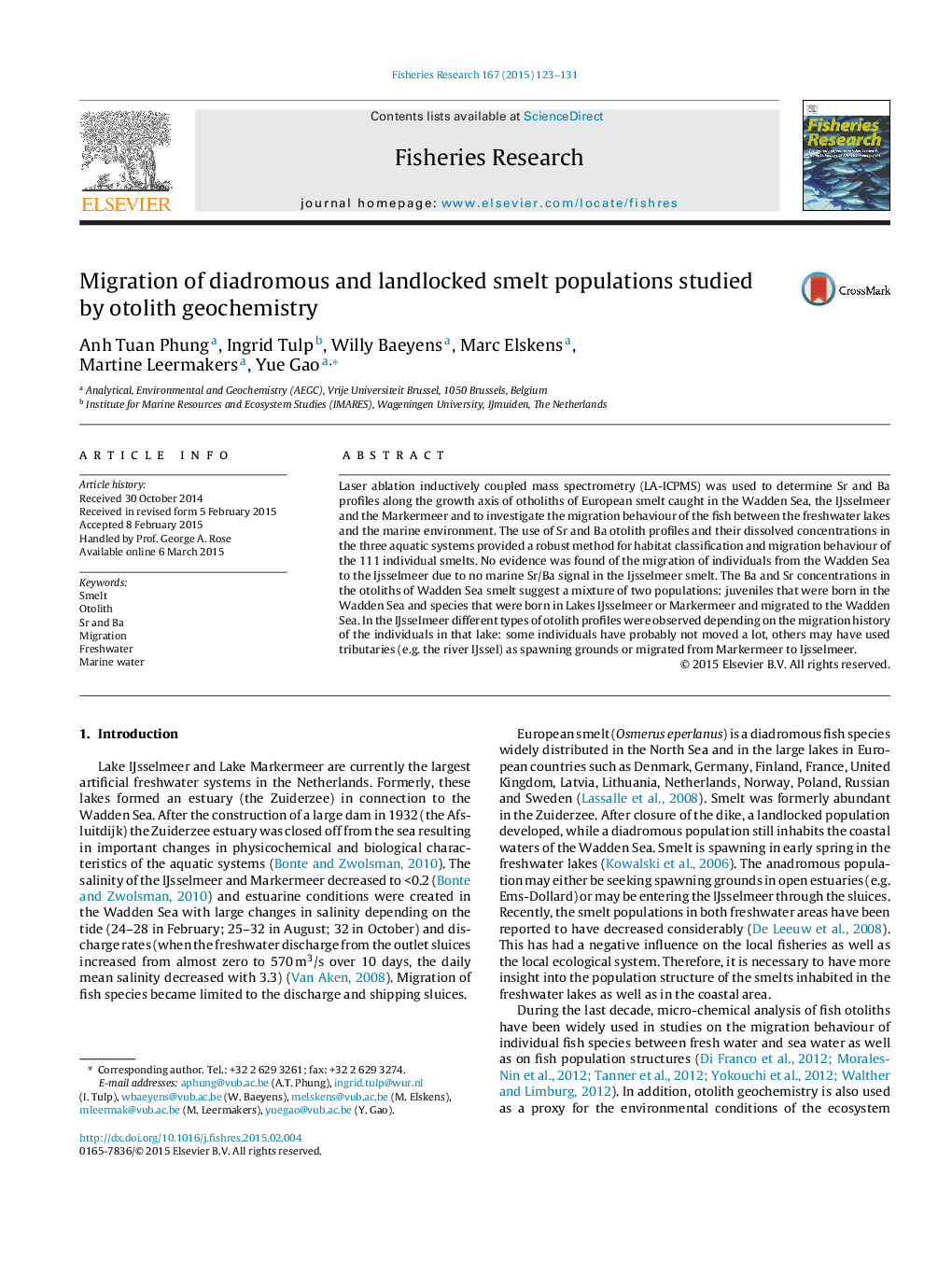| Article ID | Journal | Published Year | Pages | File Type |
|---|---|---|---|---|
| 4542898 | Fisheries Research | 2015 | 9 Pages |
•Sr and Ba profiles in smelt otoliths were determined with LA-ICPMS.•Smelts were caught in marine and fresh water environments.•A discriminant function analysis of Sr and Ba could classify the smelt population.•Species born in the Lakes migrated as juveniles or adults to the Sea.•No migration of smelt from the Sea to the lakes observed.
Laser ablation inductively coupled mass spectrometry (LA-ICPMS) was used to determine Sr and Ba profiles along the growth axis of otholiths of European smelt caught in the Wadden Sea, the IJsselmeer and the Markermeer and to investigate the migration behaviour of the fish between the freshwater lakes and the marine environment. The use of Sr and Ba otolith profiles and their dissolved concentrations in the three aquatic systems provided a robust method for habitat classification and migration behaviour of the 111 individual smelts. No evidence was found of the migration of individuals from the Wadden Sea to the Ijsselmeer due to no marine Sr/Ba signal in the Ijsselmeer smelt. The Ba and Sr concentrations in the otoliths of Wadden Sea smelt suggest a mixture of two populations: juveniles that were born in the Wadden Sea and species that were born in Lakes IJsselmeer or Markermeer and migrated to the Wadden Sea. In the IJsselmeer different types of otolith profiles were observed depending on the migration history of the individuals in that lake: some individuals have probably not moved a lot, others may have used tributaries (e.g. the river IJssel) as spawning grounds or migrated from Markermeer to Ijsselmeer.
Graphical abstractUse character colour AQUA for the graphical abstract heading. This is a paragraph for graphical abstract.Figure optionsDownload full-size imageDownload as PowerPoint slide
